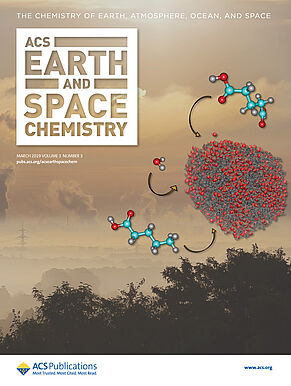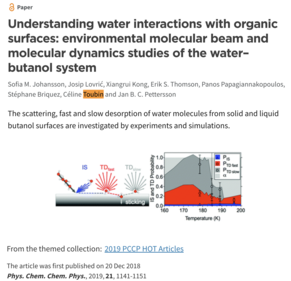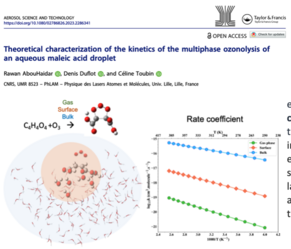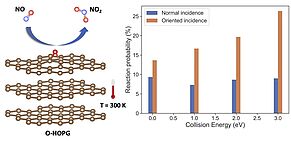Formation, composition and reactivity of aerosol particles and their implications for the Earth atmosphere
Interactions between gaseous molecules and complex surfaces (clusters, aerosols, soot, grains, ices) impact both gas phase composition and particle aging, affecting volatile species. These interactions, influenced by factors like temperature and humidity, can be monitored experimentally (e.g., uptake coefficient) and are crucial for understanding species presence and reactivity. Current transport models often fail to capture these heterogeneous processes accurately, highlighting the need for integrating theoretical studies with experiments.
Collaborations with experimentalists
- V. Riffault, S. Dusanter @IMT Nord Europe
- K. Wilson @Lawrence Berkeley National Laboratory, USA
- Jan Pettersson @Gothenburg, Sweden
- M. Ammann @PSI, Switzerland
- B. Wyslouzil @Ohio State University, USA
have advanced several research questions:
- Nanometric modeling of marine and organic aerosols and water droplets, characterizing their hygroscopic properties and gas-phase molecule capture (HAL: hal-02083941, hal-03726342v1, hal-02002428)
- Simulations have quantified the heterogeneous reactivity of ozonolysis on unsaturated carbon chains, aligning with experimental data (HAL: hal-04322632)
Recently, simulations have provided new insights into the formation process of secondary pollutant compounds, such as NO2, through the oxidation of NO on soot particles in the atmosphere (HAL: hal-04629324).




